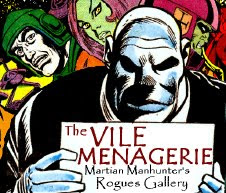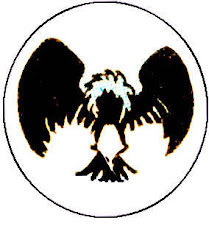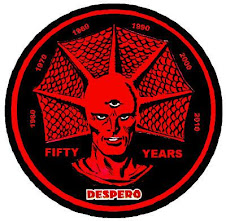Clark Kent's rocket from Krypton landed in Smallville, Kansas a bit later than in real life, offering a late teen debut of Superman in 1963 as part of an atomic age second act of the Cuban Missile Crisis. As with David Goyer's cinematic take, Pa Kent is averse to his son using his powers in any way, much less ever leaving home to do so, and warns him about unintended consequences with the story of his accidental wartime killing of a child. The flying farmboy in overalls nonetheless inserts himself into a moment of geopolitical panic that's ultimately responsible for the fiery death of the citizens of Coast City, California. Cue a rapper monotonously and repetitively intoning "this is the remix."
Clark Kent stumbled upon the Fortress of Solitude and begins training to become Superman, plagued by imposter syndrome over the recent circumstances, and his failure to live up to the hologram of Jor-El's minimum expectations of his child's development. The following year, Clark moved to Metropolis, where he took over Lois Lane's old "kooks" beat after she leveled-up to full reporter. It was here that he met Pariah ("this is the remix, uh-huh uh-huh") and was given a prediction of multiversal doom that will hang over the entire mini-series. Elsewhere, Bruce Wayne further develops a rejected pitch to the military into his Batman arsenal, jet fighter Hal Jordan downs Abin Sur's starcraft, and Lois Lane investigates the great events of the times, including the story highlight of spending time in jail with the Freedom Riders. Lex Luthor creates another missile crisis so that he can rule over the ashes, but is captured by Batman, and the actual nukes are redirected by the arrival of Superman. The characterizations mostly fit the Tom Mankiewicz mold, so you'd be forgiven for hearing the voices of Reeve, Kidder, Cooper, Beatty, and especially Gene Hackman while reading. The outliers are at Wayne Manor, as you'd more rightly hear Sam Hamm as read by Keaton and Gough, including the complete absence of a Robin. A month later, Wonder Woman is dropped into the U.N. to state the need for Amazonian intervention in any future crisis, and joins Green Lantern and the World's Finest at the new Hall of Justice. You can use whatever voice you want to while reading Princess Diana, because she's little more than an obligatory visual presence throughout this story.
Book Two leaps to 1972, and concerns itself with the impotence of colorful heroes maintaining the status quo in troubled times, within a story that is itself almost entirely bereft of non-whites, aside from stereotypical pimp and hos in the opening sequence. Maxwell Lord ("uh-huh uh-huh") takes over Wayne Enterprises, and runs it with such sociopathic criminality that Batman has to burn it all down in the end. Despite being the liberal voice of the Justice League of America for a generation, the appearance of Green Arrow, along with Aquaman, is purely token-- leaving the handwringing to the Dark Knight and Man of Steel. The Flash gets more attention, but in an already media-indebted work, painfully takes his cues from Ezra Miller's atypical ADHD neurotic. Clark Kent drops the ball on Watergate and is scooped by Lois Lane, who is constantly reinforced as his professional and moral superior. Kent does make a big show of finally acknowledging this, seemingly unlocking Lois' chastity as they finally embrace romantically, then marry, then procreate. It's a remarkably conservative trajectory, even for a Superman comic. The back third of this edition of an exceeding long trilogy of self-important 80-page tomes dispenses with the social concerns in favor of a lengthy Brainiac battle that sets the stakes of a final reckoning with the Crisis, along with the abrupt demise of Hal Jordan. Again though, nobody in this book really matters except Clark, Lois, and Bruce.
As with the Zack Snyder Murderverse, I'm more put out by the late inclusion of the Martian Manhunter than I would have been his total omission. It's explained by a contrivance of the story that no aliens are publicly known before the arrival of Brainiac, except Superman, and also readers saw Abin Sur and the Jor-El hologram, but whatever. He is joined by Green Lantern John Stewart, the Hawks, Black Canary (previously at Jordan's funeral,) Red Tornado, the Atom, and... Swamp Thing?!? Stewart gets the job of a Guardians of the Universe-informed exposition dump on the Anti-Monitor, and the insermountable Crisis coming in its wake. This is furthered by a multiverse of Brainiacs trying to recruit a multiverse of Superman...ses... after destroying their individual Earths for... natural resources, or something? It's a dumb play for such a bunch of... you know. In another straight lift from multimedia, Superman is girded into expanded action by the death of his terrestrial father by heart attack. Superman decides 19 years into the narrative to finally embrace hologram Jor-El and his inherited intellect to... take a few years off to master the human genome so that he can analyze every living being to create a pill that cures whatever ails them? It's ahh-- rather convenient-- and continues the telegraphing of the final resolution begun with one particular multiversal Superman at the top of Book Three.
In a nauseating turn that I'm thankful I read before the election, an Alan Dershowitz stand-in exonerates Lex Luthor for mass murder, allowing him to rebuild LexCorp, undermine Superman, and hire a rather Ledger Joker (complete with a Moore-biting origin story) to kill Batman... in an exhaustingly overlong tangent within an already tediously overwritten yet undercooked work that took me seeming ages to finish in one sitting... in a hospital waiting room, to boot. Trust that I was looking for a good distraction here. I had other books with me, but this thing ate up all the hours available for reading. Plus, the whole thing is just a set-up for a gag where Luthor claims victory just as the Crisis begins in earnest and he's forgotten entirely. Whomp-whomp. Here's hoping life imitates art. All I want for Christmas is a Big Mac-fueled coronary.
In a totally unobtrusive sequence where Allred definitely does not draw himself, friends, and family in as bystanders, most of the Earth perishes in lava as the planet breaks into pieces. For once, we don't actually see J'onn J'onzz die by fire, though he almost certainly burns. Just to twist the knife, Swamp Thing uses his stretching powers to save people in the final panel to bother with the props that were the JLA in this tale. Everyone dies, but Superman made a crystal that he stuffs through a hole in the multiverse made by the Brainiacs to land on an Earth where only a Superman survives. He uses it to repopulate everyone from the Space Age Earth as clones, including Lois and Jon Kent, who wonder why he made a golden statue in honor of himself. "That's not me, " the other Superman explains to extras from the forgotten 2005 Michael Bay thriller The Island. The End. So now you can't ask "Whatever Happened To...?" And I believe that I used every available Manhunter image in this blog post.
"Space Age" was by Mark Russell & Michael Allred, credits I copied & pasted from Mike's Amazing World of Comics, who it pleased me to realize was still with us long enough to catalog the book. I haven't had much experience with the writer, but was bowled over by his Superman meets Jesus Christ series Second Coming, which left me on the lookout for more. The artist I've enjoyed since buying the original Tundra Madman #1 in 1992, although I've mostly admired from afar.
Superman was one of my first super-heroes, as would be common for children "From the Thirties to the Seventies." Among my earliest exposures was the Superman #1 Treasury Edition, reprinting the initial Siegel & Shuster stories, so my perspective on the character may be a bit different from most. I don't think the Superman comics of my childhood were very good, and while my key periods of faithful reading were 1987-88 & 1993, I don't hold that material particularly dear. As a fan and retailer, I kept up with the Triangle Number period through heavy skimming and odd reads until it ended, and have dipped in from time to time, but ultimately firmly rejected the Post-Crisis interpretation of the character that persists to this day. My taste in Superman is informed less by the comic stories that I've read and more by the idea of him-- heavily informed by the Donner films, the Animated Series, and references/second hand recollections. I like the Kryptonian Superman-- the one who is more Kal-El than Clark Kent-- as seen in the Golden and Silver Age comics. On pure concept, as metaphor, and at the peak of popular cultural relevance, give me the 1950s Weisinger Man of Tomorrow. I think the further he's drifted from that ideal, with an ever greater corruption by acolytes of Stan Lee's heroes with feet of clay, the less Superman has had to say in distinction from any other idiot that wears their underwear on the outside. It's right there in the "Man of Steel" moniker that the emphasis should be on the super, man!
Russell struck me as a big idea type, and Allred loves playing in a groovy oddball mid-century space, so I really thought that this mini-series would finally serve me the alien intellectual Superman that I've been longing for. There is a little bit of that, mostly toward the end, but it slipped my mind that one of Allred's biggest influences was the foundational Spider-Man artist Steve Ditko, and that Russell's overt humanism lent itself more to Denny O'Neil than Otto Binder. I was crushingly disappointed to realize that Space Age was pretty much the exact opposite of what I'd hoped for, and would trod well worn deconstructionist ground. Thanks to its setting and style, it strongly recalls Darwyn Cooke's The Final Frontier, but undermines its heroes and exposes the underbelly of the nation instead of celebrating the progress made in that era. I now understand that the relatively muted response to this piece is probably because it's so similar to and so pale against other efforts. It was sort of a Justice League story with no interest in the team, a Superman story that gave most of the victories to Lois Lane or Batman, aimed for profundity with bumper sticker platitudes, was a Bronze Age Marvel story with Silver Age DC characters, used the fall of Camelot as an arch and unnecessary allegory for modern sociopolitical concerns, and was a comic book largely dependent on characterization from outside media, reading like pro-fic pitched directly at Walter Hamada's Warner Brothers. But most importantly, as with Snyder, it fundamentally misunderstands the icons it toys with, and the nature of their metafiction. Laura Allred's colors are a beauty to behold on her husband's delightful pencils, but it's all in service to a story that I hold in contempt, and was such a chore to get through that I'll only ever take it off my bookshelf to look at, never again to be read. What I don't need in this moment is a downer yarn about the Superman that failed.
Subscribe to:
Post Comments (Atom)


































2 comments:
Did you hear about the Absolute Martian Manhunter book?
I can't get excited for the reinvention of a character that I don't think DC has ever fully defined in the first place. Plus he looks like Metamorpho the Multi-Alien.
Post a Comment